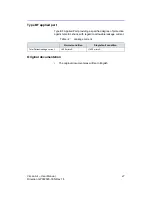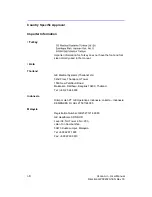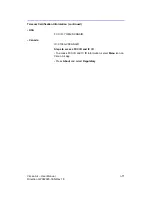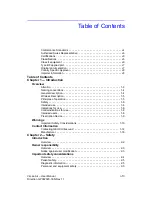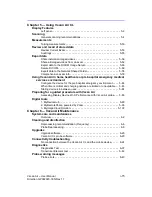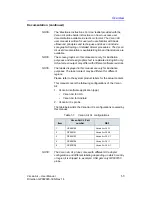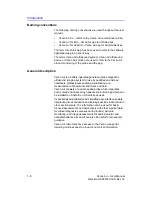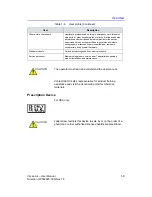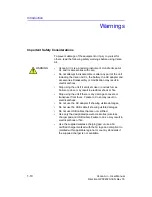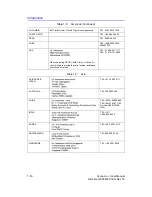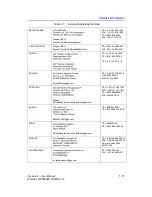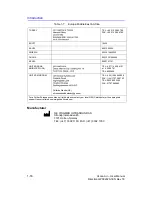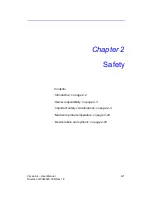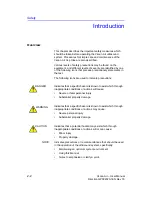
Overview
Vscan Air
–
User Manual
1-5
Direction GP092020-1EN
Rev 18
Wireless Description
Wireless communication utilizes the 2.4GHz and 5GHz (UNII-1
and UNII-3) bands supporting the IEEE 802.11a, IEEE 802.11b,
IEEE 802.11g and IEEE 802.11n protocols. The wireless module
supports bandwidths of 20MHz and 40MHz. The preferred
frequency is 5GHz, with bandwidth 40MHz.
Principles of operation
Medical ultrasound images are created by computer and digital
memory from the transmission and reception of mechanical
high-frequency waves applied through a probe. The mechanical
ultrasound waves spread through the body, producing an echo
where density changes occur. The echoes return to the probe
where they are converted back into electrical signals.
These echo signals are amplified and processed by several
analog and digital circuits having filters with many frequency and
time response options, transforming the high-frequency
electrical signals into a series of digital image signals which are
stored in memory. Once in memory, the image can be displayed
in real-time on the display device.
A probe is an accurate, solid-state device, providing multiple
image formats. The digital design and use of solid-state
components provides highly stable and consistent imaging
performance with minimal required maintenance.
Table 1-2: Wireless description
1
Wireless network protocols supported
IEEE 802.11a/b/g/n
2
Frequency bands of transmission / reception
2.4GHz and 5GHz(UNII-1 and UNII-3)
3
Preferred frequency or frequency band
5GHz
4
Bandwidth(s) supported
20MHz and 40MHz
5
FCC EIRP of 2.4GHz Wi-Fi
17.01 dBm
6
FCC EIRP of 5.0GHz Wi-Fi
13.59 dBm
7
FCC EIRP of Bluetooth Low-Energy
7.61 dBm
8
ETSI EIRP of 2.4GHz Wi-Fi
17.81dBm
9
ETSI EIRP of 5.0GHz Wi-Fi
14.90 dBm
10
ETSI EIRP of Bluetooth Low-Energy
7.38dBm
11
SAR
0.540 W/kg (SAR Limit = 1.6 W/kg - over 1g)
0.295 W/kg (SAR Limit = 2.0 W/kg - over 10g)
Federal Communications Commission (FCC), Effective Isotropic Radiated Power (EIRP), European
Telecommunications Standards Institute (ETSI), Specific Absorption Rate (SAR)
Summary of Contents for Vscan Air
Page 5: ...Vscan Air User Manual i 3 Direction GP092020 1EN Rev 18 This page intentionally left blank...
Page 14: ...i 12 Vscan Air User Manual Direction GP092020 1EN Rev 18...
Page 324: ...Using Vscan Air CL 5 112 Vscan Air User Manual Direction GP092020 1EN Rev 18...
Page 370: ...Vscan Air Maintenance 6 46 Vscan Air User Manual Direction GP092020 1EN Rev 18...
Page 382: ...Privacy and Security 7 12 Vscan Air User Manual Direction GP092020 1EN Rev 18...
Page 406: ...Index 2 Vscan Air User Manual Direction GP092020 1EN Rev 18...
Page 407: ......

